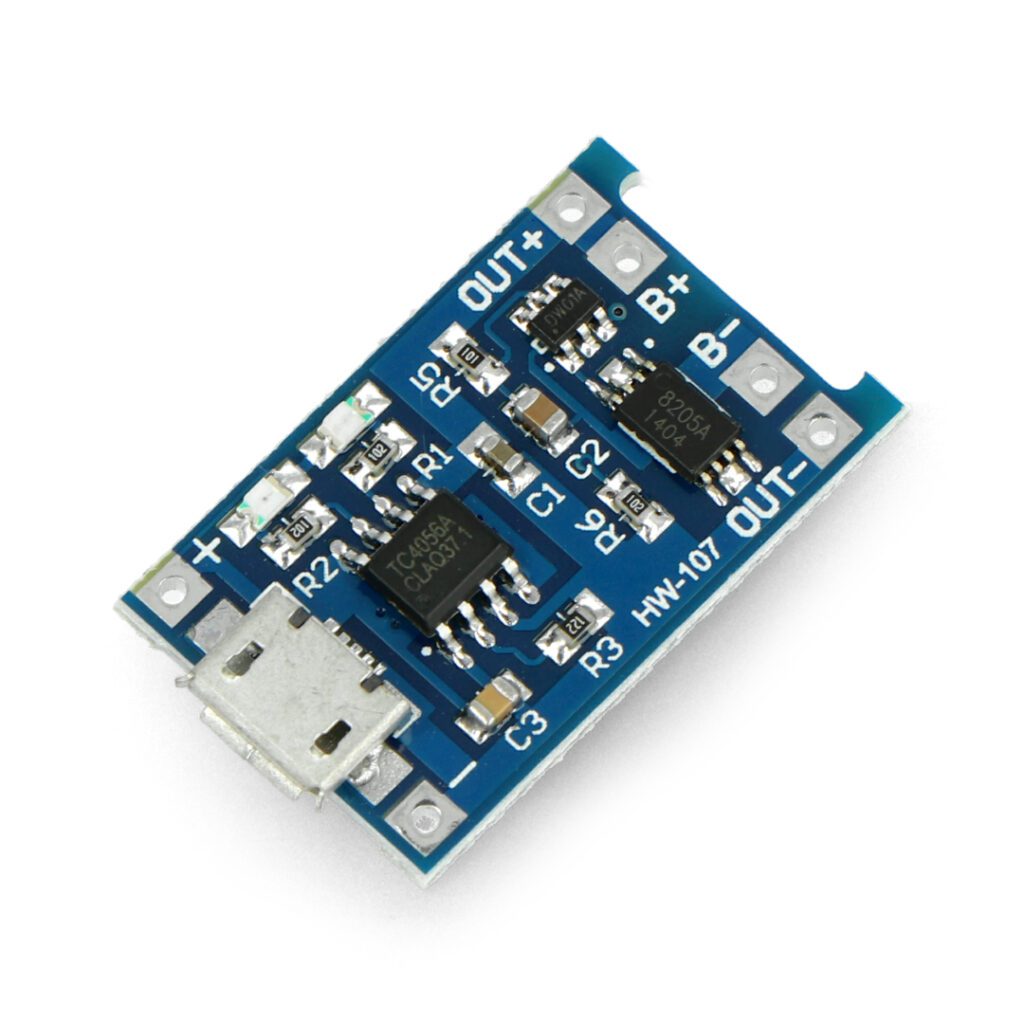Table of Contents:
TP4056 is an integrated circuit for charging single-cell lithium-ion or lithium-polymer batteries. It is widely used in various electronic devices, including powerbanks, battery chargers and DIY electronics maker projects. Above all, TP4056 provides a simple and cost-effective solution for safely charging and managing lithium-ion or lithium-polymer batteries. It can be said with certainty that these two types of batteries reign supreme in areas such as smartphones and tablets, laptops, car cameras or consumer and automotive electronics.
What are integrated circuits?
It is impossible to talk about the circuit TP4056, or indeed about modern electronics in general, without a basic knowledge of what are integrated circuits. They are the basic building blocks of all modern electronic devices. As the name suggests, it is an integrated system of multiple miniaturized and interconnected components embedded in a thin substrate of semiconductor material (usually silicon crystal).
An integrated circuit (IC), in short, is a small electronic component that contains a complex array of interconnected electronic devices. There may be transistors, resistors, capacitors, and even entire microprocessors – all etched on asemiconductor chip. These components work together to perform various functions such as amplification, switching, signal processing or memory storage.
There may also be additional components on there, all interconnected by a complex network of semiconductor wafers, the aforementioned silicon, copper and other materials.
In terms of size, each component is small, and often microscopic. The resulting circuit, a monolithic integrated circuit, is also small – often taking up only a few millimeters or square centimeters of space.
The TP4056 chip and its key functions
TP4056 chip is a lithium-ion battery charger for a single cell, protecting the cell from overcharging and undercharging. It has two status outputs to indicate charging in progress and charging completed, and a programmable charging current of up to 1A. It can be used to charge batteries directly from a USB port, as the operating range of the input voltage is 4V ~ 8V. Note, however, that the maximum current from the USB port is 500 mA. There are two types of popular circuit boards for this chip, one containing only the charger chip and one with three chips on board. Lithium batteries can be dangerous if not charged properly, so TP4056 takes care to stop excessive voltage and charging current.
- Charging functionality. The TP4056 is primarily designed to charge single-cell lithium-ion or lithium-polymer batteries, and these batteries are commonly found in smartphones, tablets and other portable electronic devices.
- Single-cell support. Note that the TP4056 charger is designed to charge batteries with a single cell, usually with a nominal voltage of 3.7 V (for lithium-ion or lithium-polymer batteries). If it is necessary to charge multiple cells in series, an additional circuit will be needed.
- Constant current charging. TP4056 charges the battery with a constant current until the battery voltage reaches a set threshold.
- Constant voltage charging. When the battery voltage reaches a threshold value, the TP4056 switches to constant voltage charging mode. The current gradually decreases as the battery approaches full charge.
It is worth noting that there are many circuits that show the use of the TP4056 as both a charger and a load driver – and it is not good. Never use the TP4056 as a charger and a load controller at the same time – turn off the load while charging the battery, and turn off the charger while charging the battery. Alternatively, you can use a PMOSFET transistor, a resistor and a Schottky diode. In addition, lithium batteries cannot absorb overcharging – the current must be cut off after charging, as we do not want a sudden rise in temperature.
Li-Po and Li-Ion batteries - benefits
Li-Po cells provide a fundamental advantage – batteries of almost any shape can be produced. This is an important asset in terms of space and weight for mobile devices, notebooks or drones. Li-Po also means a low self-discharge rate of about 5% per month. That’s why Li-Po batteries power drones, RC (radio-controlled) models and vehicles, powerbanks, ultra-thin laptops, portable players, wireless video game controllers, PC peripherals, electronic cigarettes and anything that targets a small size and high energy density outweighs cost.
Li-Ion is, in turn, stability, less risk of overheating, resistance to mechanical damage and great longevity. Paired with Li-Po and Li-Ion batteries, the TP4056 charger can be customized for different charging configurations, for multi-channel operation it is easy to use multiple boards – something for DIY enthusiasts.
How useful was this post?
Click on a star to rate it!
Average rating 4.8 / 5. Vote count: 6
No votes so far! Be the first to rate this post.




















